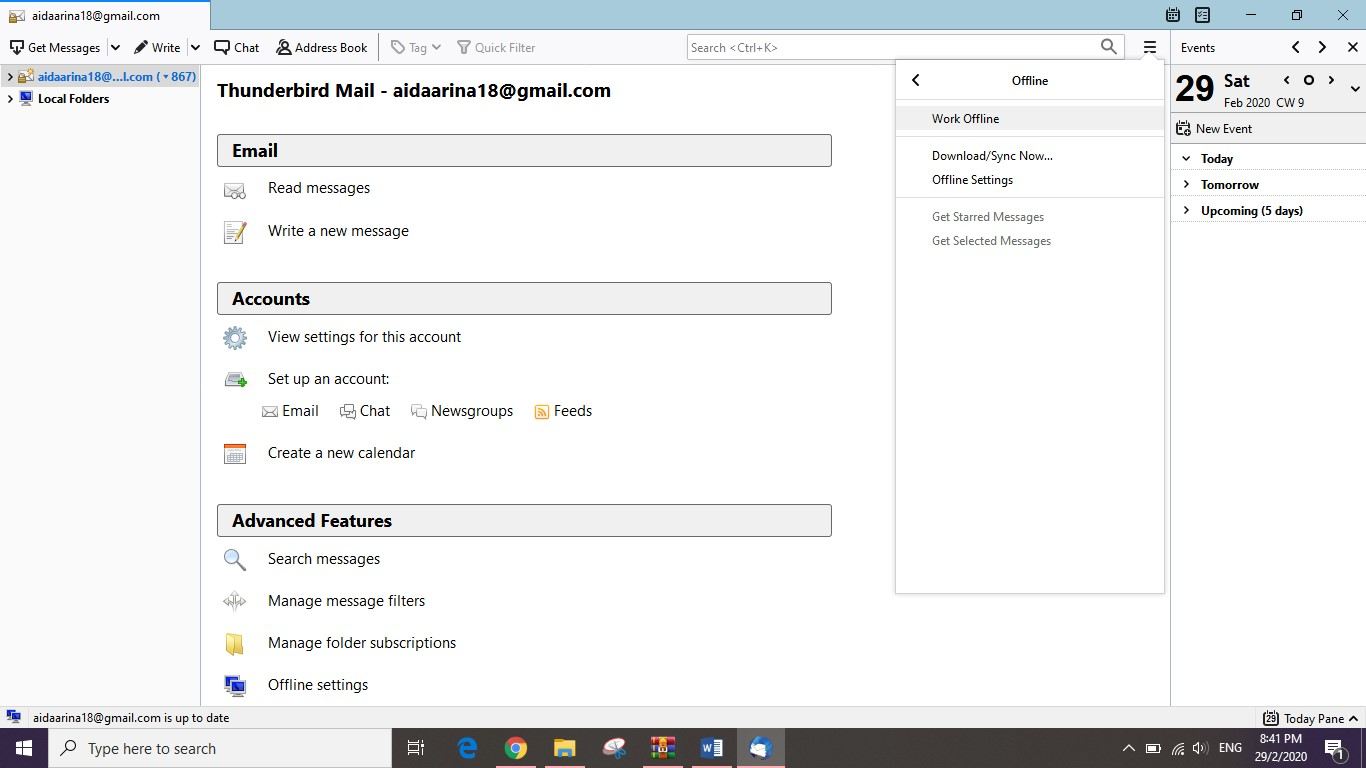

- #Thunderbird email file location code#
- #Thunderbird email file location Pc#
- #Thunderbird email file location free#
Go to your existing profile folder and copy your mail files over to the new location. Create a folder in the new location where you would like to store your mail.Ģ. I tried this but for some reason, Thunderbird did not recognize the move and created a brand new profile – as if I was starting from scratch.įound the following instructions on the Mozilla Thunderbird site and this worked like a charm:įor accounts using the Global Inbox (Local Folders)ġ. Tks for taking the trouble to write up such really detailed directions. That should confirm that the file structures are the same between the older version of Thunderbird and the newer version. I used the method detailed above with no problems. I installed the latest 2.0.0.0 version of Thunderbird and set up the profiles.ini file to point to the copy of the old files from the previous installation of Thunderbird 1.5.
#Thunderbird email file location Pc#
I just rebuilt a PC and reinstalled Windows XP. Just copy the Thunderbird backup file to the My Documents folder, or the folder of your choice, and apply the correct path and fault folder name to the profiles.ini file and you should be set to go. The only difference is that Thunderbird will have generated a different fault folder name in the Profiles folder. The same method can be used for restoring a backup file to a new PC.

Check to make sure that every character and space is correct. If you see a message like the following, it means that you did not get the path correct. New messages should now be saved in the new location and backups are now much easier to accomplish. If you got the path correct, you should see all of your old e-mail messages. If you put the directory on another drive, use the appropriate path to that directory.Īfter making the changes, save the file and start Thunderbird. Also, remember to use backslashes, rather than forward slashes in the absolute path. Do not forget to substitute the name of your Windows account in place of my account name called "Craig". Note: the Path= directive should be on one line. Path=c:\Documents and Settings\Craig\My Documents\ Thunderbird\Profiles\fault The new contents of the file for my Windows XP system now looks like this: Second, fully specify the new path to the new location of the Profiles folder and the default file folder. This changes the path from a relative path to an absolute path. First, change IsRelative=1 to IsRelative=0. You will need to make two changes to the profiles.ini file. Before you make changes, it might be a good idea to make a backup copy of the profile.ini file, just in case you run into problems. "xhbhq33l" is a random name generated by Thunderbird when the program is installed. I know it looks like a file name, but it is actually a folder. default folder with all of your e-mails and Thunderbird’s configuration information.
#Thunderbird email file location code#
The Path=Profiles/fault line is the code that points to the. The contents of the profiles.ini folder will look something similar to this: It might e a good idea to save a backup of the file before you alter it. You need to use a pure text editor like Notepad. Do not use Word or a word processor because these programs typically save invisible headers and formatting codes when they save a file. Open profiles.ini with a pure text editor, such as Notepad. In Windows 2000 and XP, you should find it in:Ĭ:\Documents and Settings\\Application Data\Thunderbird. Make sure that Thunderbird is closed and locate the Thunderbird file folder. Moving the Thunderbird files is a four step process. That way, I just have to pop a blank CD or DVD into my DVD burner drive and send the My Documents folder to the disk to create a backup. Like most people, I like to set up all of my programs so that the files created are all stored in folders within the My Documents user folder. That makes it difficult to remember that these files should be backed up along with Word documents, Excel spreadsheets or any other files that your business cannot afford to lose.

The default location for files is buried in a special Application Data folder in the Documents and Settings folder. One issue that I ran into is related to doing backups. Thunderbird is actually very configurable, but the methods required to change certain aspects of the program are not very intuitive.
#Thunderbird email file location free#
Mozilla’s Thunderbird is a free and very popular e-mail client.


 0 kommentar(er)
0 kommentar(er)
